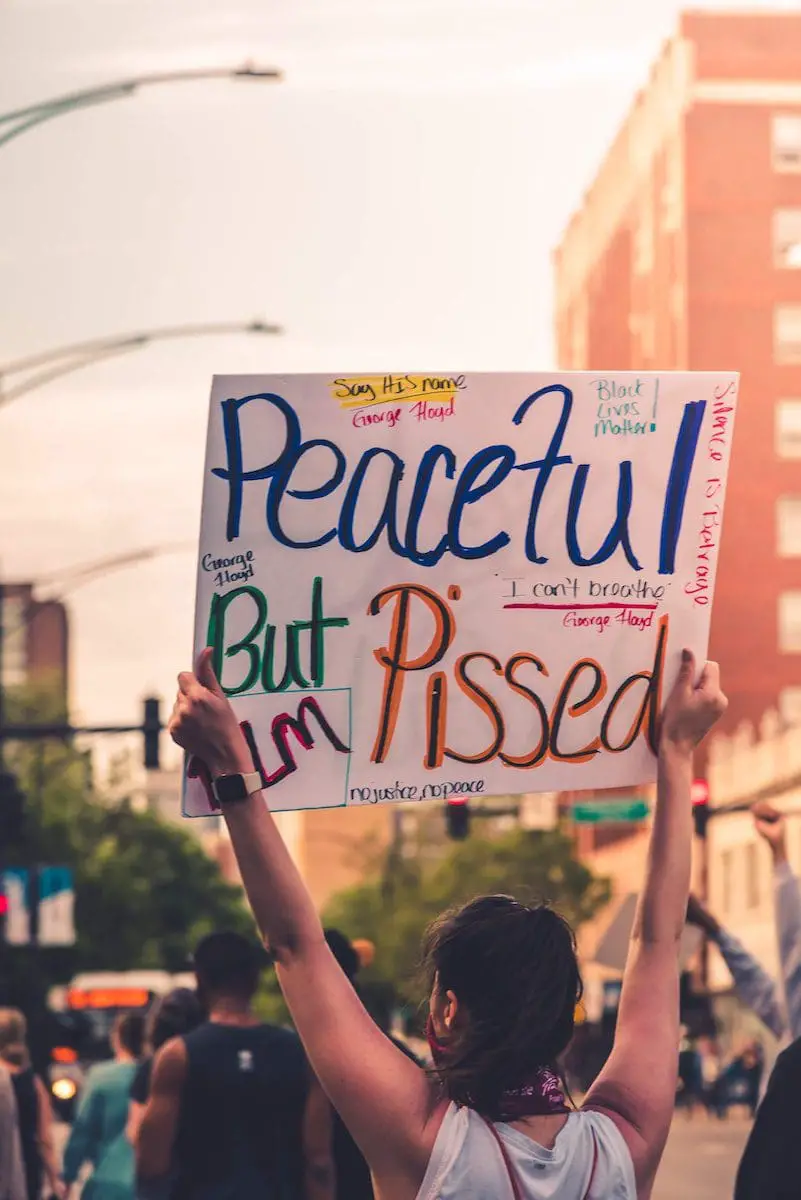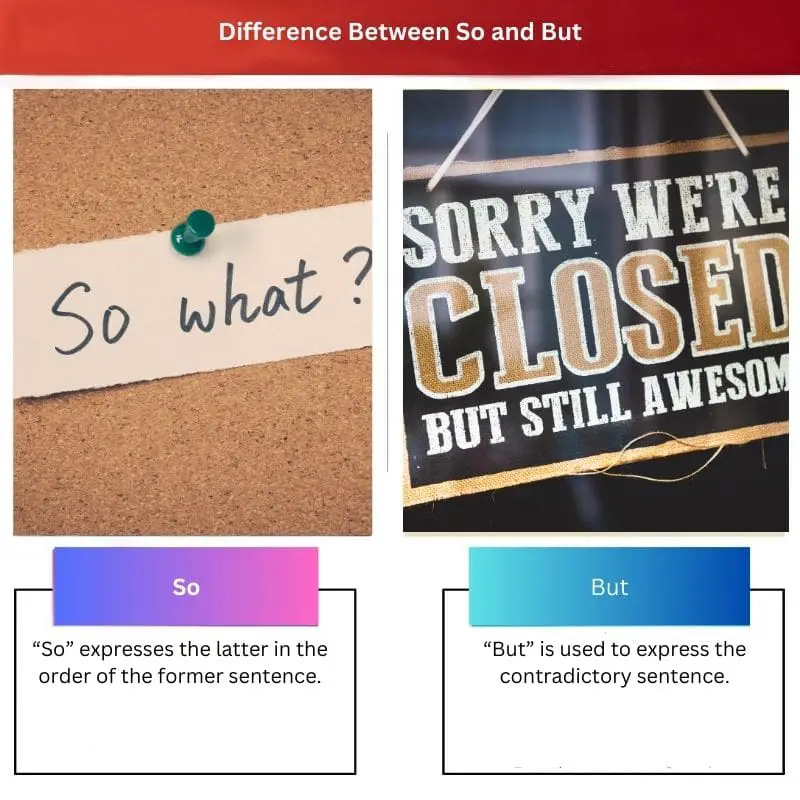In grammar, a conjunction is a part of speech that connects words, phrases, or clauses and is known as a conjunct. Conjunctions are also known as connectors or joining words.
A coordinating conjunction joins words, phrases, or clauses with a similar grammatical structure; a Subordinating Conjunction connects a subordinating or dependent clause to the main, an independent clause.
There are seven coordinating conjunctions, for example, so, but, and, or, yet, for, and nor. They connect the followings:
- Word + word
- Phrase + phrase
- Clause + clause
Key Takeaways
- “So” is a conjunction that connects cause and effect, while “but” is a conjunction that links contrasting ideas.
- “So” highlights the result or consequence of an action, while “but” emphasizes the difference between two ideas.
- “So” can also be used as an adverb to emphasize quality, whereas “but” is a conjunction.
So vs But
The difference between So and But is that so is used to denote the conclusion or to, whereas, on the other hand, But is used to show the contrary or except that/for.

Comparison Table
| Parameters of Comparison | So | But |
|---|---|---|
| Meaning | “So” expresses the latter in the order of the former sentence. | “But” is used to express the contradictory sentence. |
| Usage | “So” is used when the speaker needs to conclude the sentence. | “But” is used when the speaker needs to express the difference between the former and the latter sentence. |
| Examples | For example, I don’t know how to act, so I cannot perform in a skit. | For example, I can run, but I don’t like to. |
| Part of Speech | It is a part of coordinating conjunctions. | Just like so, but is also a part of coordinating conjunctions. |
| Alternative words/phrases | Alternative words for “So” are: Therefore, hence, and subsequently. | Alternative words and phrases for “But” are: On the other hand, contrary, and whereas. |
When to Use So?
“So” is one of the seven coordinating conjunctions used to join sentences, phrases, or clauses; whenever these conjunctions are used to join two independent phrases or clauses, the meeting is always preceded by a comma.
As an adverb which may be followed by an adjective or an adverb, for example, Why are you so angry this morning? The word so is used in this example and is followed by an adverb.
As a conjunction, it connects two clauses or phrases and is succeeded by a comma; for example, There were not enough beds, so I slept on the floor.
The following are the cases in which so is used:
- Used for emphasis:
- Emphasizing a quality, amount, or a feeling, for example, I am so hungry, That picture is so good, or This crate is so expensive
- Emphasizing a fact, for example, the book is so dull.
- Used to delete repetition:
- Referring to a possibility, fact, or situation, for example, Does the president intend to go to Moscow? If so, then when?

When to Use But?
“But” can be used as an adverb, preposition, and, last but not least, conjunction. When used as a conjunction, it connects two phrases or clauses; for example, She is 76 but still goes swimming each day.
As a preposition, it is followed by a noun; for example, there has been trouble since he came.
The word “but” is used in the following cases:
- Used for joining two ideas and statements; for example, we are progressing well but still have a long way to go.
- Used when the speaker knows they should not talk more about the subject, such as, it was a complicated operation but I won’t bore you with the details.

Main Differences Between So and But
- “So” can introduce a new fact before the listener; however, the word “but” is used when the speaker knows he or she should not be discussing the topic.
- “So” can join two phrases or clauses; for example, I am down with a fever, so I won’t play today. In the case of “but”, it is also used to join two phrases or clauses that consist of two contrary ideas; for example, we are making progress but need to work more.


That was really informative, and the comparison table was so helpful for understanding the use of “so” and “but”
I know, this post is really clear and complete
I found this post too basic for my level of knowledge, it’s a bit disappointing.
Disappointing and confusing, not a good combination.
I understand where you’re coming from, the post could be more advanced.
The post was a bit patronizing, I don’t think it’s necessary to explain such basic concepts in such detail.
Can’t believe they’re explaining conjunctions like no one has ever heard of them before!
I see your point, the level of detail might not be necessary for everyone.
The post was insightful, it’s always good to go back to the basics and revisit these concepts!
Absolutely, it’s crucial to have a clear understanding of these grammar rules.
I disagree, this post is convoluted and hard to understand in some parts.
I understand what you mean, the post could be more concise.
This post was pretty comical, it’s incredible to think that so much can be said about conjunctions.
I agree, it’s quite entertaining how much depth can be found in the simplest of grammar concepts.
This post left a lot to be desired, it’s hard to believe there’s such a lengthy discussion about ‘so’ and ‘but’.
Agreed, sometimes it’s best to keep things simple.
Ironic that such a simple concept is explained in such a complex manner.
I thought the same, they could’ve simplified the explanations.
The post made a compelling argument about the differences between ‘so’ and ‘but’.
I agree, the clear examples really helped to understand the differences.
The post is a great refresher, I appreciate the detailed explanation.
Yes, it’s always nice to revisit these topics!